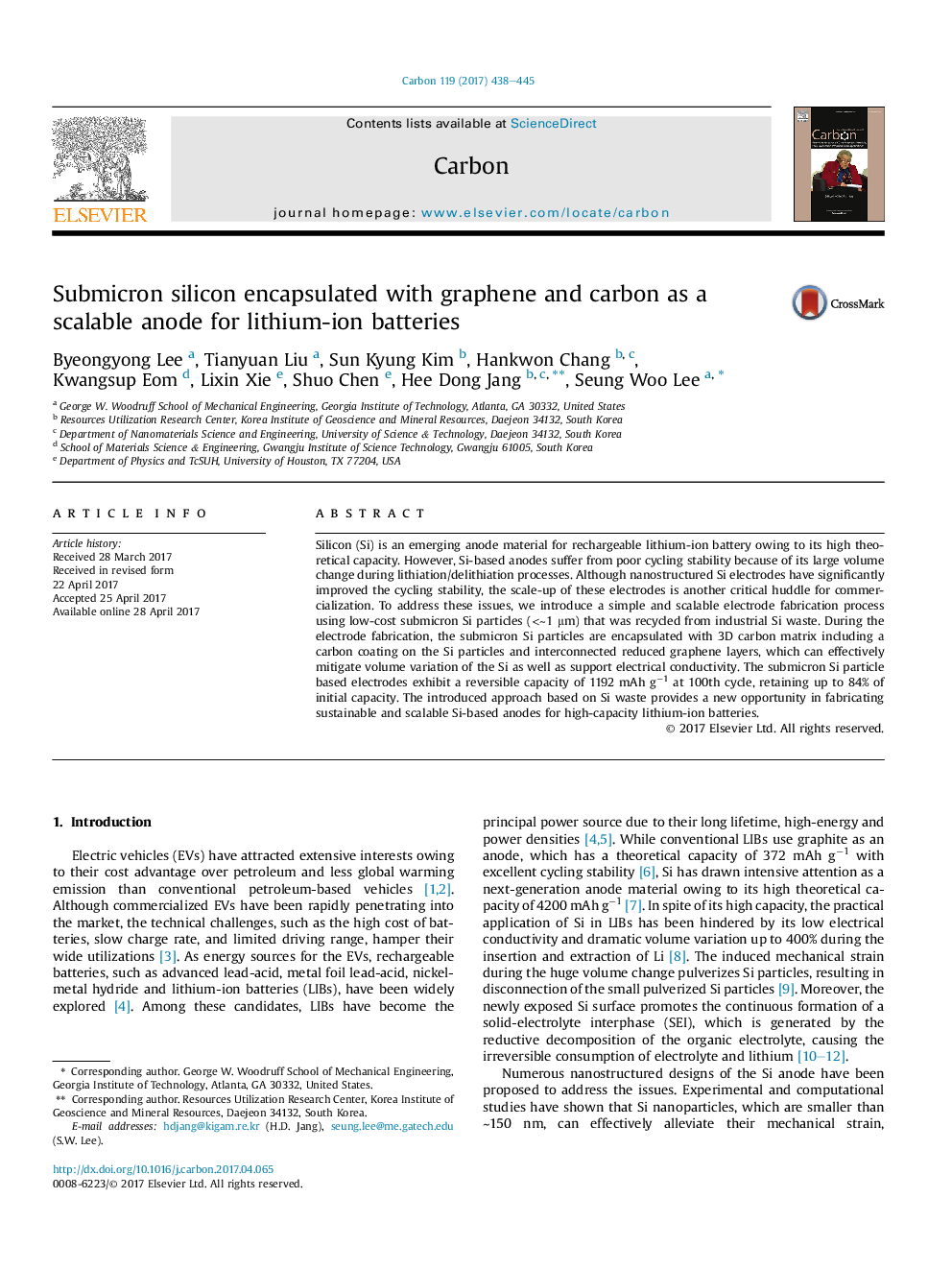| Article ID | Journal | Published Year | Pages | File Type |
|---|---|---|---|---|
| 5432128 | Carbon | 2017 | 8 Pages |
Silicon (Si) is an emerging anode material for rechargeable lithium-ion battery owing to its high theoretical capacity. However, Si-based anodes suffer from poor cycling stability because of its large volume change during lithiation/delithiation processes. Although nanostructured Si electrodes have significantly improved the cycling stability, the scale-up of these electrodes is another critical huddle for commercialization. To address these issues, we introduce a simple and scalable electrode fabrication process using low-cost submicron Si particles (<â¼1 μm) that was recycled from industrial Si waste. During the electrode fabrication, the submicron Si particles are encapsulated with 3D carbon matrix including a carbon coating on the Si particles and interconnected reduced graphene layers, which can effectively mitigate volume variation of the Si as well as support electrical conductivity. The submicron Si particle based electrodes exhibit a reversible capacity of 1192 mAh gâ1 at 100th cycle, retaining up to 84% of initial capacity. The introduced approach based on Si waste provides a new opportunity in fabricating sustainable and scalable Si-based anodes for high-capacity lithium-ion batteries.
Graphical abstractâºCost-effective submicron-scale Si anode has prepared from industrial Si waste. âºTaken together with simple and toxic-free electrodes fabrication process based on the recycling of industrial waste, the recycled submicron Si encapsulated with graphene and carbon provides a powerful strategy to resolve scalability of Si anode.Download high-res image (219KB)Download full-size image
